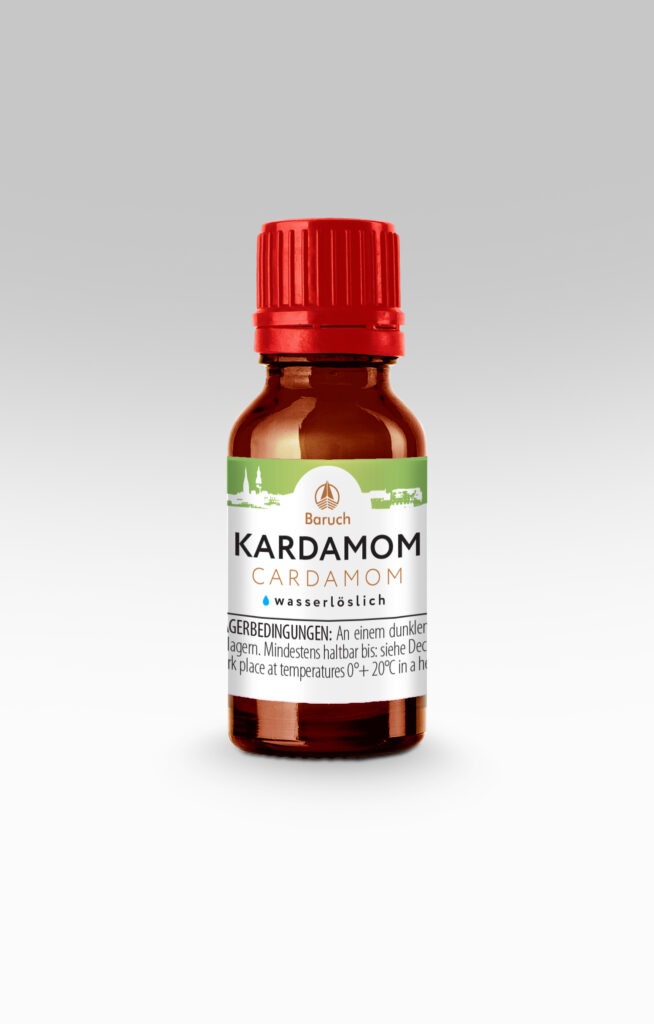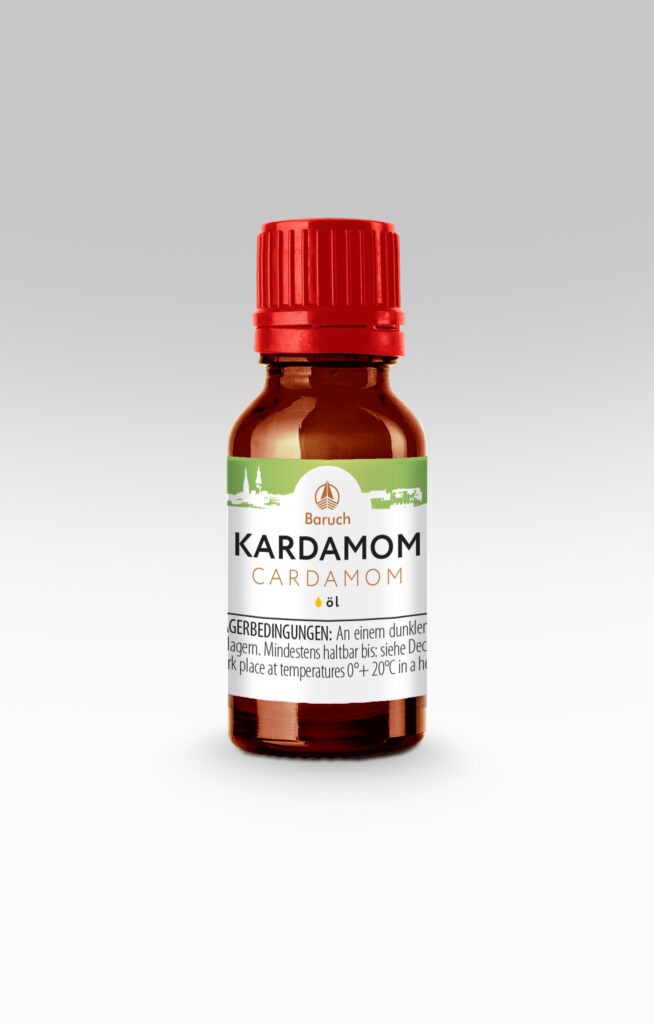Cardamom is one of the most expensive spices. Immediately it should be noted that it is real or the so-called green cardamom, which comes from Indian or Ceylonian roots. Black Asian (Siamese) and Australian cardamom with larger capsules as well as Ethiopian (yellow) cardamom from Africa are very common on the market. All these spices are very similar in taste and aroma, but inferior to real green cardamom in these indicators. All cardamoms are distant relatives of ginger and belong to the same family.
It should be noted that crushed cardamom seeds, separated from the capsules, are considered a real spice. Seeds in capsules, especially not crushed, do not make it possible to fully extract the taste and aroma. But even seeds that have not been crushed, especially those that are peeled from the capsules within two to three months, completely lose their taste and aroma properties. By using CO2 extract, a very concentrated spice is obtained, the taste and aroma of which surpasses freshly ground seeds and remains unchanged over several years.
The CO2 extract from cardamom is perfect as a substitute for ground cardamom in various oriental dishes and sauces. Recommended as a hot and sweet condiment for legumes, potatoes and rice. Gives various vegetable and fruit salads additional flavor. It goes well with the aromas of coffee and tea, can be used for flavoring. Cardamom CO2 microemulsions can be used to flavor soft and alcoholic beverages. Cardamom goes well with flavors of lemon, coriander, cumin, ginger, cinnamon, black pepper, and nutmeg.
As a biologically active substance, the CO2 extract from cardamom has pronounced antibacterial and anti-inflammatory properties, is an antidepressant, soothes and relieves pain. Helps lower cholesterol, prevents blood clots, improves blood circulation. Relieves convulsive phenomena, including asthma. It is an immunomodulator and a recognized aphrodisiac.
CO2 extract from cardamom “Biozevtika” is an oily liquid of yellowish-brown color with a pleasant, pronounced, characteristic odor. Several hundred compounds were analyzed in the course of chromatomass spectrometric investigations, of which more than 60 were identified.


Chart 1. The main compounds of the CO2 extract of cardamom
| NAME | CONTENT IN% OF THE AMOUNT OF VOLATILE COMPONENTS | EFFECT |
|---|---|---|
| 1,8-Cineol | 16 | An extremely powerful antiseptic, heals, relieves pain. |
| Limonen | 4 | Perfume, antifungal and aseptic. |
| Linalool | 4 | Perfumery fragrance. Allergen. |
| Linalyl acetate | 5,3 | Perfume fragrance. |
| Terpenyl acetate | 48 | Perfumery fragrance. |
| Alpha-Terpeneol | 2,6 | Used as an antimicrobial agent. Used for the synthesis of aromatic compounds, perfume fragrance. |
| Sabinene | 1,5 | Antibacterial and antiviral effects. |
| Camphor | 0,8 | Stimulates the respiratory center in the brain, has a positive effect on the heart muscle, improves the respiratory function and has a vasoconstricting effect. It is antiseptic and locally irritating. The specific smell has a calming effect on the human body. |
| Palmitic acid | Unsaturated fatty acid for water repellency in cosmetics. | |
| α- and β-linolenic acids | Unsaturated. An essential fatty acid from the class of omega-3 fatty acids. It has a membrane protecting, angioprotective effect. Immunomodulatory, improves brain metabolism. | |
| Linoleic acid | An essential unsaturated fatty acid of the omega-6 class. It has anti-inflammatory, vasoconstrictor, and aggregating effects. If there is no balance between omega-3 and omega-6 fatty acids, competitive processes can arise that influence the metabolism. |
The following products are made in cosmetics with cardamom:
- Toothpastes and gargles for bleeding gums
- Cleansing tonic, peelings
- for renewal, toning and regeneration of the skin
- to increase the elasticity and firmness of the skin
- to treat acne, ulcers
- to increase microcirculation and normalize vascular tone
- To combat the manifestations of cellulite, to tighten the skin
- to moisturize the skin
It is most commonly used in perfumery products.
Chart 2. Application rates, recommendations for use and storage of the CO2 extract of cardamom
| Food usage rates | Item А100: 0.001% (10g per ton) Water-soluble microemulsions EMA1: 0.1% (1l per 1000l or 1ml per liter) |
| Application rates in cosmetics | Item А10: 1-3% Item А100: 0.1-0.3% |
| Recommendations for use | It is recommended to add CO2 extracts in the final stages of preparation, in the cooling phase of the end product. |
| Storage Instructions | Storage advice |
| Use in dietary supplements | Application in cooking | Application in cosmetics |
| Antioxidant. Strengthens the immune system, lowers blood cholesterol, improves metabolism, removes toxins. It has a stimulating, digestive, antiseptic, antiparasitic, astringent effect. | In European and Russian tradition, cardamom is added to desserts and sweet pastries, sometimes in coffee. Cardamom is used for pickling vegetables, fish, when making minced meat for sausages and pies. In the countries of the Middle East and India, cardamom is traditionally an indispensable part of the spice mixture known in Europe as curry. Cardamom is rarely used alone. In Eastern cuisine, the mixture of curry is used everywhere and it is difficult to name a dish or product that lacks this added flavor. | Promotes cell renewal, gives elasticity to the skin of the face and décolleté, firms the face. Accelerates metabolism, stimulates blood and lymph circulation, smoothes the skin with cellulite. Anti-inflammatory, antiseptic, fights acne. Strengthens capillary blood supply, improves skin color, improves supply to hair follicles. |
Real cardamom is also grown in India and, in recent years, in Guatemala. Does not occur in the wild.
Historical reference
Cardamom is one of the oldest spices known to mankind – the earliest written records of civilization already contain references to cardamom and recipes for its use. From the texts of the Sumerian clay tablets over 4,000 years ago, which were found during excavations in the city of Nippur, it emerges that cardamom was already added to bread and soups at that time.
Cardamom is often added to coffee and it’s one of the most popular uses. The most common use of coffee with cardamom is in the east, especially in Arab countries, where it is drunk often and in large quantities – for a long time this caused surprise and misunderstanding among Europeans how to drink so much coffee and have no side effects in form of a rapid heart rate and the like. Science already found the answer in our time – it turned out that the substances contained in the essential cardamom oil partially block the effects of caffeine.
